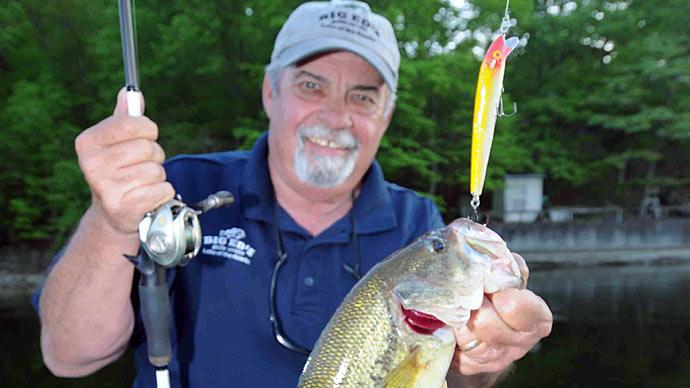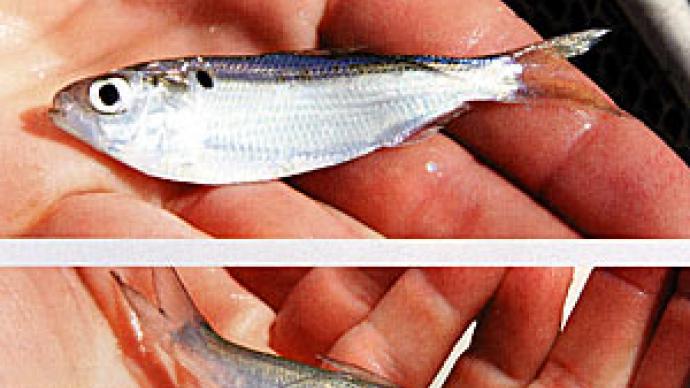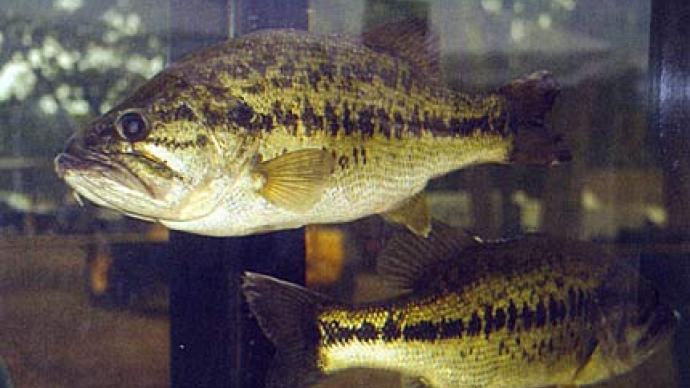Nothing excites a pond owner quite like stocking fish. It's a visual event that can make an instant impact on a fishing hole, especially on a small system of one surface acre or less.
But how many fish should you buy? And what size? Jeff Connelly, a recent visitor to the Pond Boss web site, was wrestling with these issues when he posted this note on the bulletin board: "I'm planning to build a one-acre pond in the near future (as soon as I find a home with land). I received a catalog that made some recommendations for stocking for a "typical" one-acre pond.
What do you think of these stocking rates? Are they reasonable? Or way off-base?
Species |
Rate |
Size |
| Fathead minnows | 20 lbs | 1-to-3 in. |
| Golden shiners | 10 lbs | 2-to-5 in. |
| Largemouth | 200 | 3-to4 in. |
| Hybrid stripers | 50 | 3-to4 in. |
| Bluegill | 400 | 2-to-4 in. |
| Hybrid sunfish | 200 | 2-to-4 in. |
| Channel catfish | 150 | 6-to-9 in. |
| White amur | 8 | 10-to-12 in. |
There are just as many ways to stock a pond as there are ponds. First, set your goals. Do you want to catch a few giant bass? A few stripers? Do you want a balanced fishery?
Learn which fish fit your objectives, then develop a stocking plan and a management strategy to follow. Your goals, and the time frame you wish to reach those goals should determine the numbers of fish, and their sizes.
The recommendation chart you shared has two major problems: (1) It overstocks gamefish, while understocking forage fish; (2) It implies that all fish should stocked at the same time. Both could lead to management problems. These quoted stocking rates only serve to fatten the wallet of some self-serving fish salesman. Pond Boss does not begrudge a man his living, but if all these fish were introduced, it would overload a one-acre fishery. The poor fish would be stacked shoulder-to-shoulder.
The web site visitor did not state the objectives for his pond, but let's assume he wants a balanced fishery with a combination of fish that will allow him and his visitors a chance to catch several species in the same outing. To that end, before you plunk down money unnecessarily, let's go through the species and put together a more reasonable "shopping list."
For a one-acre pond, we recommend 5 pounds of fathead minnows per acre. We like to stock these slow-swimming minnows along with 1,000 sub-adult bluegill, 2-to-4 inches long. That's just about it.
If you like to eat channel catfish, stock 100-to-200 per acre, but understand that once these whiskerfish reach two pounds, they will compete with your gamefish.
Golden shiners? They're a bit superfluous in a new pond, occupying much the same niche as the heartier bluegill and more prolific fatheads. If you're looking for a forage species to put weight on bass in an established fishery, this is a good choice. Otherwise, the golden shiner is not your best choice.
We like hybrid striped bass, but these fish will reach 8-to-10 pounds and compete directly with your largemouth, so we usually reserve this super-charged gamefish for a hybrid-only specialty pond. You should see what a 5-pound hybrid does to a light spinning rod or fly rod.
We don't like hybrid sunfish at all. It's a cross between the bluegill and the green sunfish that does not reproduce enough to sustain the other gamefish. The hybrid sunfish is much ballyhooed by some fish-hawkers, but that's because this species is easy to transport in hauling trucks. Nix the hybrid sunfish; it just takes up space that could be better used by your bluegill.
Under normal conditions, we suggest stocking 50-to-100 largemouth per acre, no more. Bass fingerlings are less expensive at 2-to- 4 inches, but if you can find 4-to-6 inch juveniles, their survival rate will be higher.
Hold off stocking the bass until your forage species get at least 3- to-4 months' running headstart. This gives the forage fish a chance to stabilize and perhaps spawn a time or two before they are invaded by hungry bass.
White amur, or "grass carp," are only used in ponds with vegetation problems. And, there are only certain types of plants these grass carp will eat. Eight would be too many to start. If you have aquatic plant problems, consider stocking three or four. If they can't arrest your weeds, you can always adjust upward.
If you use stocking rates recommended by the American Fisheries Society, which were developed over years and years of field study, coast-to-coast, you can expect to spend $400-to-$550 per acre. Prices vary by geographic region, hauling distance and market conditions.
Using a similar rate sheet, you were about to spend $800-to-$950. We just saved you at least $300, probably more. You can thank us by telling others about Pond Boss.



